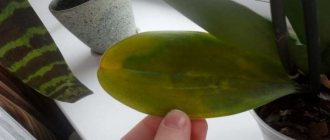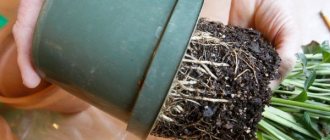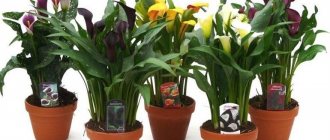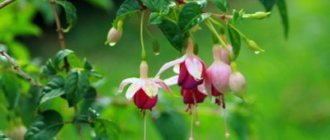Houseplants decorate any room, delight their owner with their blooming appearance, but are by no means immune from troubles. Incorrect lighting, attack by pests, temperature fluctuations, operation of a fan, air conditioner or drafts, excessive and insufficient watering, and other maintenance errors can spoil the appearance of green pets or cause their death. Therefore, it is important for a florist to notice in a timely manner that a flower is not doing well, to be able to revive it in a way appropriate to the situation, and then to take preventive measures that will reliably protect the pet from troubles in the future.
The plant is weakened after winter
During wintering, the flower is affected by several unfavorable factors at once. This includes too low air humidity, heat emanating from heating devices, cold flows from the window, and lack of sunlight.
Often plants stop growing and wither, their leaves change color, dry out at the tips or curl
To bring a weakened indoor flower back to life, you can use two methods.
Spraying with hydrogen peroxide
A 3% hydrogen peroxide solution is optimal for the procedure. It can be purchased at any pharmacy.
What do we have to do:
- Fill a container with 1 liter of tap water and let the liquid sit for 2 days. During this time, it will get rid of chlorine and reach room temperature.
- Add 2 tbsp to the water. l 3% hydrogen peroxide, stir the solution.
- Pour the working fluid into a plastic spray bottle.
- Place the flower pot in the bath, spray the plant and soil generously.
Repeat treatment daily for 2 weeks. Thanks to it, indoor plants will receive an impetus for development, and flowering species will later delight with abundant flowering.
Spraying with aspirin solution
For treatment you will only need one tablet of this drug.
How to refresh a flower with aspirin:
- Crush 1 tablet into powder.
- Mix the medicine with 3 tbsp. l slightly warm water, stir.
- Add aspirin solution to 1 liter of settled water.
- Pour the working fluid into a plastic spray bottle.
- Spray the flower from all sides.
- Pour the remaining liquid over your pet.
The temperature of the settled water must correspond to the care requirements of a particular species. Some cultures are given a cool shower, others – at room temperature, and others – 25-30°C.
The drug will help increase the immunity level of flowers. Its plant solution can be used to treat plants with the onset of spring and in winter to compensate for the excessive dryness of the indoor atmosphere.
Prevention
In order for green pets to feel and look good, it is necessary to follow the wintering recommendations for each individual species. To do this, you should protect the flowers from too high or low temperatures, cold air currents, maintain an optimal level of humidity, water them correctly, and, if necessary, add additional lighting with a phytolamp.
A houseplant was overwatered: what to do to save the unfortunate flower
If you overdo it with watering and flood the flower, do not rush to throw it away. To save the plant, it is necessary to start replanting as quickly as possible, without forgetting such important nuances as drying and treatment with an antiseptic.
Check for rotting
First, carefully remove the flooded plant from the pot. Waterlogged soil should be pliable. If it turns out to be hard, pour some water into the flower and wait 10-15 minutes.
After this, the soil will be soft enough that you can remove the plant without damaging it. Clean the roots from any remaining soil, rinse them with warm water and carefully inspect them.
If you find rot, carefully cut off the affected areas with a sharp knife or scissors.
Dry the roots and stem
Wrap the root system and stems in several layers of paper towels. In this form, place the plant in a warm and dry room. When the towels are soaked, replace them and repeat this procedure until the flower is slightly damp.
Be prepared that drying may take 1-3 hours, and do not place the plant near heating devices to speed up the process. Because of this, the moisture will evaporate unevenly and the flower will dry out quickly.
Processing the roots
To prevent the occurrence of diseases, the roots must be treated with an antiseptic before transplanting. Activated carbon is best for this.
For a small plant, 1-2 tablets will be enough. Crush the medicine into powder and treat the root system, paying special attention to the places that had to be trimmed.
Activated carbon will disinfect the flower, draw out excess moisture remaining after drying, thereby preventing your green pet from rotting in the new soil.
Replant into new soil
Replant the flower in new soil, not forgetting to take care of a good drainage system. To do this, choose a pot with special holes to drain excess moisture.
The drainage layer should be 2-3 cm thick. For this you can use pebbles or expanded clay.
When the replanting is complete, take your time to place the pot in a sunny window. In such conditions, the flooded roots will quickly dry out, and the green pet will simply die.
To prevent this from happening, for the next 2-3 weeks, remove the plant to a shaded place where there are no strong drafts. It is important that the room has a stable temperature of +18-20°C.
Carry out sanitary pruning
To make the flower recover faster, cut off some foliage. Feel free to get rid of old, limp and damaged greenery.
It does not bring any benefit, but it takes away strength and nutrients that the plant could spend on restoring a healthy part. If there are no wilted greens, remove a few of the lower leaves.
Setting up watering
For the first 2-3 weeks, until the plant has recovered, water so that the soil remains slightly moist and not soggy.
Then move the pot to a sunny window, find out what kind of watering regime this species requires, and try to strictly adhere to it. Place a special sign or label next to the pot, on which it is convenient to write down the necessary care information.
Remember that you can save a flooded flower only with an emergency transplant. If you delay it a little, the root system of the green pet will begin to rot, and it will simply die.
Lack of watering
Excessive lack of watering can destroy even succulents, not to mention more moisture-loving crops. When plants become depleted of moisture:
- leaf blades become lethargic;
- the flower sheds its lower leaves, exposing its trunk;
- the pet tries to protect itself from fluid loss, so it drops buds or pauses the flowering stage.
The appearance of the flower undergoes changes, since the flow of physiological processes in it is disrupted due to a lack of water.
Simple procedures will allow you to cope with the situation.
Watering
It is not the volume, but the frequency of watering that should be increased. Some time after each watering, you need to lift the pot, then drain the excess liquid from the pan. This will make it possible to restore leaf turgor and the course of natural processes, but at the same time prevent rotting of the root system.
Spraying with mineral water
Lethargy of the leaves will help eliminate irrigating the flower with mineral water at the optimal temperature for the species.
How to perform the manipulation:
- Keep a bottle of mineral water in the room; if necessary, warm it up a little in a container of warm water.
- Pour the liquid into a plastic spray bottle.
- Place the pot in the bath.
- Cover the soil in the pot with plastic wrap.
- Spray the flower.
- Place your pet in its usual place once the moisture has evaporated from its leaves.
The procedure must be performed over several days. As soon as normal elasticity returns to the sheet plates, it can be canceled.
Potassium permanganate and sugar
Both remedies have worked well if the flower’s leaves are drooping and slightly yellowed. To prepare the working solution:
- Dissolve 1 teaspoon of sugar in 1 liter of water for irrigation.
- Water the plant at an appropriate frequency.
- When the situation improves, switch to regular water.
If you decide to use potassium permanganate, prepare a pale pink solution. To do this, add 2-4 crystals to 1 liter of water for irrigation in advance.
What does blackening, yellowing, pale and drying foliage mean?
In addition to withering and deformation, leaf blades can change color. Based on these visible changes, you can determine why the condition of the flower is deteriorating:
- Leaf blades that have turned black at the tips indicate the appearance of gommosis, hypothermia, or the onset of putrefactive processes.
- Yellowed, drooping foliage indicates chlorosis or improper soil moisture.
- Gray-brown coating is a sign of gray mold.
- Leaves rolled into a tube indicate the presence of soft-bodied mites.
Attention! Fading and drying leaves are a sign of increased air dryness, which tropical spathiphyllum perceives negatively. This may also be a sign of improperly selected soil.
In most cases, it is possible to save a fading spathiphyllum. To do this, the cause should be identified, and if putrefactive processes are detected, the flower should be replanted, having previously removed the diseased areas of the root system. If the plant is affected by diseases and pests, it is necessary to treat it with special preparations or use proven folk methods.
Dried soil
After a business trip or vacation, the owner may find that his plants are almost dry. The biggest mistake in this case is to give the flowers a pouring shower or place the pots in a basin of water.
Weakened pets will not be able to fully absorb moisture, but there will be a danger of soil acidification or rotting of the root system
The correct action is to place your pets in a shaded, slightly cool place, and gradually saturate the substrate with water. There are several ways to restore flowers after drought.
Wet sponge
It is enough to wet a regular sponge with water, then place it on the surface of the soil near the plant trunk. A wet sponge will release water, which will gradually moisten the substrate.
Emergency steam bath
For the procedure, you need to heat the water to a temperature of 80°C.
What to do next:
- Place a ceramic or brick stand at the bottom of a wide basin.
- Pour heated water into the basin. The top edge of the water should be ⅓ of the height of the stand.
- Place the potted plant on the raised stand.
- Wait until the water cools down.
- Move the flower to a shaded place.
Water vapor penetrates the soil well, so there is a high chance that after 6 procedures your beloved pet will return to normal.
Drip irrigation
Drip irrigation is the best way to save an almost dried-out pet. This simple, non-labor-intensive method of resuscitation can be easily applied using available materials.
Main steps of the procedure:
- Take an empty plastic bottle with a suitable sized cap.
- Heat an awl or nail over a gas burner or candle flame.
- Make 2 holes - one in the bottom of the bottle, the other in its cap.
- Fill the bottle with settled, bottled, filtered, or, in extreme cases, boiled and cooled water.
- Screw on the lid.
- Place a water bottle in the plant pot.
Water will penetrate drop by drop into the soil and gradually wet it.
The size of the hole in the lid affects the rate of soil moistening, so it should not be made too large in diameter. It is enough if the diameter is only 3 mm.
Guseva Ulyana
Ask a Question
Question to the expert
What to do if actions to moisten the substrate did not lead to the desired result?
Sometimes the listed methods do not lead to a change in the situation. Then, if the root system of the flower is in order, the plant must be transplanted into fresh soil. In extreme cases, cut off the most viable shoots and then use them for cuttings.
Prevention
Before planned absences from home, it is advisable to take care of the well-being of green pets in advance. To do this, gardeners can use several effective methods.
Flower flasks
These are special flasks made of glass or plastic with a narrow spout. They are made in different colors, figured, transparent and opaque.
You need to pour settled water into the flask, and then stick the spout into the ground
The main subtlety is to ensure that when installing, particles of the substrate do not clog the hole in the spout.
One flower flask will cope with moistening the soil in a small pot. It is permissible to insert 2-3 devices into large containers.
Top wick irrigation
The automatic watering system consists of several synthetic cords and a large container of water.
What needs to be done to prevent flowers from suffering from thirst during a long absence of the owner:
- Fill a basin or other container with water.
- Place the liquid source on a chair.
- Place pots of plants around the container.
- Cut the cord into individual lengths.
- Secure one end of each cord to the bottom of a container of water.
- Bury the other end of the cord into the soil.
For drip irrigation, a tube and a bottle of water are perfect, which should be placed above the pot with the plant. Such a system can be easily made with your own hands or purchased at a store that sells products for flower growers.
A fading flower is a “warning” about divorce
As already mentioned, representatives of the flora subtly sense the energy of the owners of the house.
And they quickly respond to changes that occur in the family. Conflicts between spouses and the appearance of a rival are one of the common causes of disease and withering of plants. First of all, the buds suffer from this. Only those plants that are in the matrimonial bedroom respond to such reasons. If the housewife notices the problem in time and understands what is causing the “poor health” of indoor flowers, perhaps the marriage can be saved.
Stagnation of water in a flower pot
When water stagnates in a flower pot at first, especially in large plant specimens, no changes are noticeable in the above-ground part.
During this period, certain events occur sequentially:
- the lump of earth does not dry out;
- the soil turns sour;
- a favorable environment is created for the proliferation of rotting bacteria and pathogenic fungi;
- the root system of the flower loses the ability to breathe, rots and dies.
In some cases, the pet suddenly begins to bloom or grow unnaturally quickly. Plants that have been flooded before purchasing from the store often behave this way.
When most of the roots of a flower die, sap flow stops. Therefore, its leaves become dull and wither, and spots form on them. Depending on the species of the crop, the leaf blades may turn yellow or black, but they will certainly die. At the final stage, the trunk softens.
Before taking any action, it is advisable to establish the reason why the flower flooded. Most often this happens because:
- The crop was not transplanted into suitable soil, but was left in a commercial substrate.
- The plant was planted in clayey “heavy” soil with low moisture and air permeability.
- The pet was watered too often during the dormant period.
- The flower was placed on a cool windowsill or in an excessively shaded place.
- The green pet was watered too much on hot days.
- The plant was moved into a container that was too large for it.
- There were no drainage holes in the pot.
- A layer of expanded clay or other drainage material was not poured onto the bottom of the pot.
When flooded, the only way out is replanting.
Rules for replanting a flooded plant:
- Remove the flower from the pot.
- Carefully free the root system from the substrate and wrap it in a paper towel or any other hygroscopic material.
- Change the towels, wait until the moisture stops seeping through them.
- Carefully inspect the root system. Remove damaged roots with a sharp knife.
- Treat the cut areas with activated carbon powder or wood ash.
- Allow the cuts to air dry.
- Place a 3-5 cm layer of expanded clay on the bottom of a clean pot with drainage holes.
- Place a layer of fresh substrate on the drainage.
- Pot the plant you are saving.
- Lightly water the flower with a light pink solution of potassium permanganate.
If your pet was placed in a pot that is too large, you need to select a container that is more suitable in size and then transplant it into it.
It will take some time for the flower to restore its root system, so you need to be patient
If a large number of roots are lost, you can put a transparent plastic bag on the plant. The film will reduce moisture loss through the sheet plates. But to prevent the plant from suffocating, the bottom of the bag must be left open. Remove the cover as soon as new shoots appear.
Important details:
- If there are foci of fungal disease on the above-ground parts of your pet, you need to remove the damaged areas. Then purchase a broad-spectrum fungicide and treat the flower several times.
- Place the transplanted plant for 7 days in a place where a constant temperature of 20-23°C is maintained.
- Do not water your pet during the first 3 days.
- Do not apply root feeding until the first new shoots appear. To support the plant, it is advisable to use foliar fertilizers.
Remember that when foliar feeding, the fertilizer must be diluted more strongly than when applying root feeding!
If putrefactive processes have taken over the stem of the flower, it will not be possible to save it by replanting. Strong and healthy-looking cuttings need to be cut from it, treated with a fungicide solution, and then used for propagation.
Prevention
Recommended by topic
TOP 25 Most unpretentious indoor plants 23 Indoor plants that purify the indoor air Spraying flowers: HOW? FOR WHAT? HOW?
Preventive measures will not allow your pet to reach a deplorable state. Therefore, having encountered a gulf and corrected the situation, we must do everything to prevent it from happening again.
There are several methods for checking soil moisture:
- Examination of the top layer of soil with a wooden stick. It is stuck into the soil 1.5-2 cm and inspected. If the wooden surface is clean and dry, it is time to water the plant.
- Weighing. The flower pot is weighed in the hand before and after watering. After several training sessions, the sensations will reliably indicate the level of water content in the soil.
- Humidity indicators. Various devices make it much easier for the gardener to care for green pets. It is enough to deepen them according to the instructions in the pot, and then monitor the data they show.
You can find a wide variety of devices on sale - from the simplest, reminiscent of a ballpoint pen, to complex electronic gadgets.
How to understand what is missing?
The plant needs help when such signs appear.:
- The leaves turn black.
- The leaf blades lose their elasticity and become sluggish (why can spathiphyllum droop its leaves?).
- The tops of young leaves darken.
- The foliage turns yellow and dries out.
- The roots become dark and hollow to the touch.
Insect pests, diseases
Insect attacks and diseases can destroy both demanding crops and picky flowers.
Fungal diseases
Fungal diseases include:
- late blight;
- powdery mildew;
- gray rot;
- root rot;
- fusarium;
- rust;
- leaf spot;
- sooty fungus.
This is what fusarium looks like on Saintpaulia.
Fungicides are used to treat them. Regular ventilation of the room, moderate spraying that does not lead to dampness, watering with Fitosporin once a month are the main preventive measures.
Bacterial diseases
The most dangerous bacterial diseases of indoor pets:
- spotting;
- cancer;
- withering;
- rotten.
Weakened plants usually die, but if the rules of care are followed, plants can overcome the disease on their own. To prevent flowers from suffering from bacterial diseases, you need to:
- avoid overwatering and excessive spraying;
- do not overfeed your pets with nitrogenous fertilizers;
- before transplanting, disinfect the fresh substrate;
- Treat the pot with boiling water before planting.
Be sure to maintain a small distance between pots with different plants.
Insect pests
Any gardener knows about these insects. First of all this:
- spider mite;
- aphid;
- scale insect;
- thrips;
- mealybug;
- whiteflies.
In advanced cases, the spider mite entwines entire young shoots.
The mite belongs to the arachnids. To destroy it, specialized acaricides and broad-spectrum insecticides have been developed.
Finding other insects is not difficult. They are easy to see during a careful examination of the pet using a magnifying glass. Characteristic leaf lesions are also a good clue.
When thrips attack, affected areas are formed. Gradually they merge with each other. On the reverse side of the leaf you can see adult insects and their excrement
Question to the expert
What drug is best to use to kill thrips?
Typically, Aktelik, Aktara, Biotlin, Fitovers and a number of other drugs are used to exterminate pests. The advantages of Aktara are in a wide range of actions. In addition, its solution can be used to spill the soil in the pot of an infected plant. And this is very important. After all, adult insects lay their eggs in the substrate.
When destroying pests, you cannot stop at a single treatment. To eliminate the threat, you need to maintain the dosage and carry out 4 sprayings with an interval of 1 week.
How to find out the name of a plant, its care and propagation options
Thanks to the development of the Internet and social networks, you can get an answer to almost any question. Just attach a photo and ask the experts in a specialized group.
By the way, when buying another indoor plant, take a photo or write down its name for the future.
If you have a type of flower, then learning how to care for them is simple. All you have to do is type this query into the search bar. It will also indicate how and when this variety reproduces.
In these same communities, they can give you advice if your green pet decides to wither away or get sick. Someone must have encountered the same problem. After all, it is impossible to give universal advice for all dying flowers.
Acquisition
Indoor plants also respond to positive changes that occur in the family. In anticipation of a big purchase, flowers are even more happy than their owners. And plants wither because they want to make room in the house for new things.
The main thing in our lives: Valery Meladze about his children and the imminent addition to the family
Scientists have found a 47-million-year-old fly with its belly full of pollen.
They will decorate the yard and produce a harvest: the best ideas for above-ground beds











